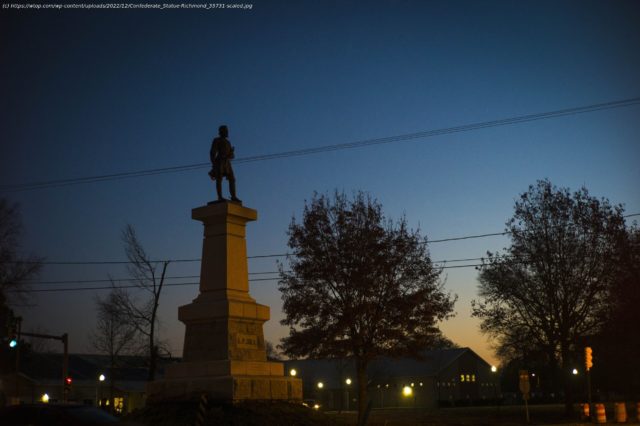The city of Richmond — the capital of the Confederacy for most of the Civil War — removed its last city-owned Confederate statue on Monday, more than two years after it began to purge itself of what many saw as painful symbols of racial oppression.
The city of Richmond — the capital of the Confederacy for most of the Civil War — removed its last city-owned Confederate statue on Monday, more than two years after it began to purge itself of what many saw as painful symbols of racial oppression.
It took just minutes to free the statue of Confederate Gen. A.P. Hill from its base, before a crane using yellow straps looped under the statue’s arms lifted it onto a bed of tires on a flatbed truck. After the statue was removed, the crew got to work removing the base. Several dozen people, including neighbors, some of Hill’s indirect descendants and supporters and opponents of the removal, stood in the closed intersection watching the crew work.
Richmond removed its other Confederate monuments amid the racial justice protests that followed George Floyd’s killing in 2020. But efforts to remove the Hill statue, which sat in the middle of a busy intersection near a school, were more complicated because the general’s remains were interred beneath it about 25 years after his death at the end of the Civil War.
Many Confederate statues in Virginia were erected decades after the Civil War, during the Jim Crow era, when states imposed new segregation laws, and during the “Lost Cause” movement, when historians and others tried to depict the South’s rebellion as a fight to defend states’ rights, not slavery. Some Confederate tributes remain in Richmond, but they’re on state land, including on Capitol Square surrounding the Virginia State Capitol building.






